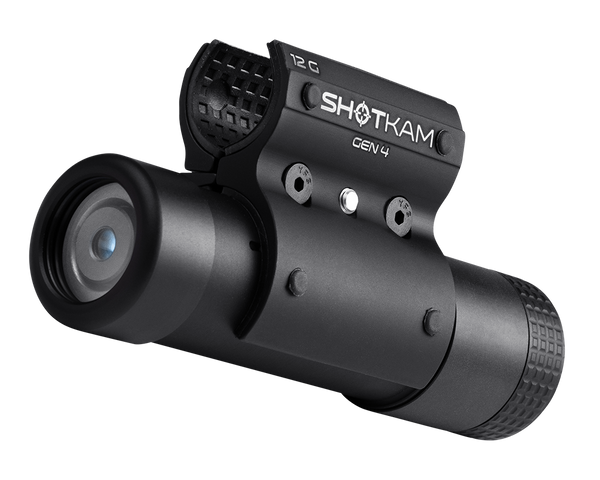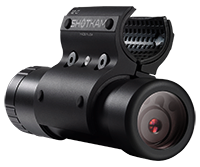De beste tipsene for trapskyting (av ATA-verdensmesteren)

Written by Foster Bartholow - Singles Clay Target World Champion
Rising Youth Participation in Shooting Sports
All throughout the USA, we are seeing a significant rise in youth participation in shooting sports. In states like Minnesota, Iowa, South Dakota, and several others, thousands of kids are picking up a 12-gauge shotgun and getting into the sport of clay shooting. This sport happens to be one of the safest for youth when compared to football, basketball, and other high-impact sports.
Understanding the Dynamics of Trapshooting
When you start examining the game of trapshooting, there are many intricate dynamics that come into play. Gun fit, ammo selection, hold-points, stance, eyewear, and the correct mental attitude are just a few of the things we talk about during our youth shooting clinics.
Below are a few tips I’ve learned throughout my shooting career that will help both new and experienced shooters improve their trapshooting. If you’re new to youth shooting or coaching, the following topics will break down some of the fundamentals.

Comparing One vs. Two-Eye Shooting
As we dive into the topic of one vs. two-eyed shooting, the first thing to do is to determine your dominant eye. This is critical to keeping proper sight of the target and will prevent double vision of the bead or being cross-eyed. There are several ways to find your dominant eye. The easiest way is to straighten your arms out with your hands in front of you. Make a triangle with your thumbs and index fingers, then find an object to center inside that triangle. Slowly bring your arms back toward your eyes, and the triangle will naturally gravitate toward your dominant eye.
Now that you’ve found your dominant eye, I’ll explain what I’ve found helps most shooters determine hold points.
The One-Eye Shooter
A one-eyed shooter is someone who is off-eye dominant and shoots with the opposite arm. For example, a one-eyed shooter will be left-eye dominant and shoot right-handed. These shooters have multiple options for shooting; they can either close their off-eye, or they can use the “dot system.” The dot system involves using a piece of tape or semi-transparent material on shooting glasses over the off-eye. This prevents that eye from seeing the rib, barrel, and target, allowing the shooter to keep both eyes open without sacrificing their peripheral vision.
Typically, one-eyed shooters hold fairly level on the top of the trap house as they cannot see “through” the barrel compared to two-eyed shooters.
Den toøyde skytteren
Two-eyed shooters are those that shoot with the same arm as their dominant eye. For example, a two-eyed shooter will be right-eye dominant and shoot right-handed. Shooters like this have an advantage over one-eyed shooters in that they have a better overall vision of the target. They don’t have to close one eye or lose vision with the dot system in order to focus on the target. This allows two-eyed shooters to have a higher hold point as they can see “through” the barrel. Typically, two-eyed shooters will have a hold point ranging from 1 to 1.5 feet above the trap house for an easier opportunity to swing to the target.
Both options are great for shooters. I’ve seen both sides of the spectrum where shooters will try and change their shooting hands to match their dominant eye. There are great shooters that use both styles. Personally, I have the longest shoot-off at the Grand American world championships with 1,100 x 1,100, and my brother, Matt (being a two-eyed shooter), has shot 1,578 registered targets without missing. Both styles work, so find yours and rock it!
Importance of Stance and Footwork
Many people think shooting a shotgun is all upper body and arms, but that’s a huge misconception. I always discuss using your whole body as a sort of turret to move to and throughout a target. Essentially, you’re using your lower, middle, and upper body together in one motion to create a fluid motion to that target.
If you’re at home reading this, let’s try a quick drill.
For å starte, late som om du har haglen i hendene (du kan prøve dette med haglen din også, men sørg alltid for at pistolen er losset og pekt i en sikker retning).
If you’re a right-handed shooter, I want you to move to an imaginary target flying to the right using just your arms to swing. If you’re a lefty, pretend you have a target moving to the left. Right away, you’ll notice the gun doesn’t feel very “locked in” to your face and may even feel like it’s wanting to come off your cheek. This can have a massive impact on your shooting, especially if there are several angles at play, like in sporting clays or hunting scenarios.
Next, try this: for the righty, make a move to the same imaginary right target, but now use your legs, mid-body, and hips to drive your upper body to the target while keeping your arms stationary. Feel the difference? You might now notice that your face stays locked into the stock because there’s a huge reduction in arm movement. This shooting style keeps the barrel moving in the most accurate and consistent swing possible, from the start to the follow-through. Of course, using your arms to move up to the target is necessary, but if you can keep your body moving as one, everything will work together to get you to the target and follow through in one fluid motion.
Fluid movement is moving to and through the target at a speed that feels comfortable to you. It’s important to remember that everyone's speed to the target is different.
Nå er det her fotarbeidet ditt er avgjørende.
Correcting Footwork for Improved Swing
If you’re a new shooter, I always recommend having a stance about shoulder-width apart, or maybe slightly wider than your shoulders. Stand straight up with a slight bend in the knees, so they aren’t locked. If you’re facing directly at the trap house and you’re a right-handed shooter, off-set your feet and body to the right about 45 degrees. This gives your body the ability to swing to the right much easier.

Hvis fotarbeidet ditt ikke er riktig for innlegget ditt, vil du maksimere svingen din. Enkelt sagt, maksing skjer når kroppen din ikke kan gå lenger og vil ty til å bruke bare armene for å bevege seg, eller bryte ned knærne for å svinge videre i den retningen.
Heldigvis er det noen enkle løsninger du kan prøve.
Flare a Toe
Many shooters think they need their toes straight out in front of them, which is not the case. For every inch you flare your toe out, you get approximately 6-7 degrees of extra rotation. Now, we certainly don’t want shooters thinking they have to stand with their feet completely flared out, but it’s a helpful tip to remember.
Make Small Changes
Don’t be afraid to make small adjustments from post 1 to post 5. Every post has different target angles, and your footwork should adjust accordingly. It’s all about finding and fine-tuning what works for you.
Building Confidence in Trapshooting
Det siste jeg vil diskutere er hvordan jeg kan bidra til å få tillit til meg selv og andre skyttere mens du trener, eller hva du skal gjøre selv når du trener alene.
In trapshooting, I recommend shooters at the 16-yard line use a tighter choke such as an Improved Modified to Full, rather than an Improved Cylinder to Modified. You can see where you’re hitting a target much easier and make any corrections with hold point or footwork. With a tighter choke, you can quickly gain confidence as you start dusting the targets. It can be fun and validating to watch the clays explode.
Enten du trener et ungdomslag eller ønsker å forbedre deg selvstendig, er bruk av en ShotKam også en fin måte å bidra til å forbedre andres skyteevner ved å se hvor de skyter, se mønstrene treffer målet og se hvor jevnt de beveger seg (og gjennom ) målet er. Med ShotKam kan du raskt identifisere eventuelle feil og forbedre din generelle tillit til skytemetodene dine.
The Role of Discipline in Shooting Sports
Med Trap, Skeet og Sporting Clays handler det ikke bare om å treffe leiremålet. Det er å ha et mangfoldig sett av disipliner som gir deg en måte å vokse inn i sporten og hvordan ferdighetene dine utvikler seg. Hvis du begynner på videregående og tar sportsleirekurs, kan du vokse til konkurransefotografering raskere med læringsverktøy som et ShotKam-kamera som spiller av bildene dine på nytt, slik at du kan lære og justere. Skyteklubber tilbyr ofte forskjellige disipliner etter tur, og bruker de samme skytebanene. Og når det kommer til haglene dine, er noen mer egnet enn andre (12 gauge vs. 20 gauge).
I hope these tips help you on the field this summer! If you need more help with shooting techniques, feel free to visit TrapshootingBros.com for private coaching clinics and help. You can also follow the Bartholow Brothers on trapshooters.com or ask them questions here.
Anbefalt video for deg:
You are reading:














